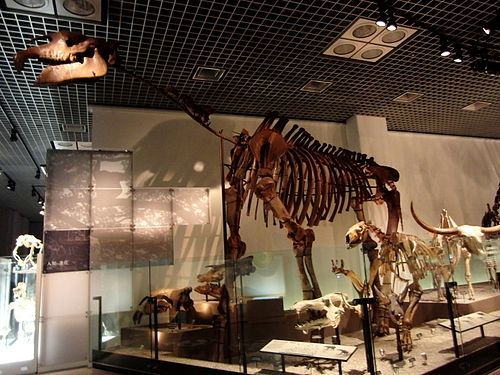 The Wikipedia article of the day for August 17, 2019 is Paraceratherium.
The Wikipedia article of the day for August 17, 2019 is Paraceratherium.Paraceratherium was a hornless rhinoceros, and one of the largest terrestrial mammals that has ever existed. The genus lived during most of the Oligocene epoch (34–23 million years ago); its remains have been found across Eurasia between China and the Balkans. Its weight is estimated to have been 15 to 20 tonnes (33,000 to 44,000 lb); the shoulder height was about 4.8 metres (15.7 feet), and the length about 7.4 metres (24.3 feet). The legs were long and pillar-like. The long neck supported a skull that was about 1.3 metres (4.3 ft) long. It had large, tusk-like incisors and a nasal incision that suggests it had a prehensile upper lip or trunk. The lifestyle of Paraceratherium may have been similar to that of large mammals such as elephants and modern rhinoceroses. It was a browser, eating mainly leaves, soft plants, and shrubs. It lived in habitats ranging from arid deserts with scattered trees to subtropical forests.